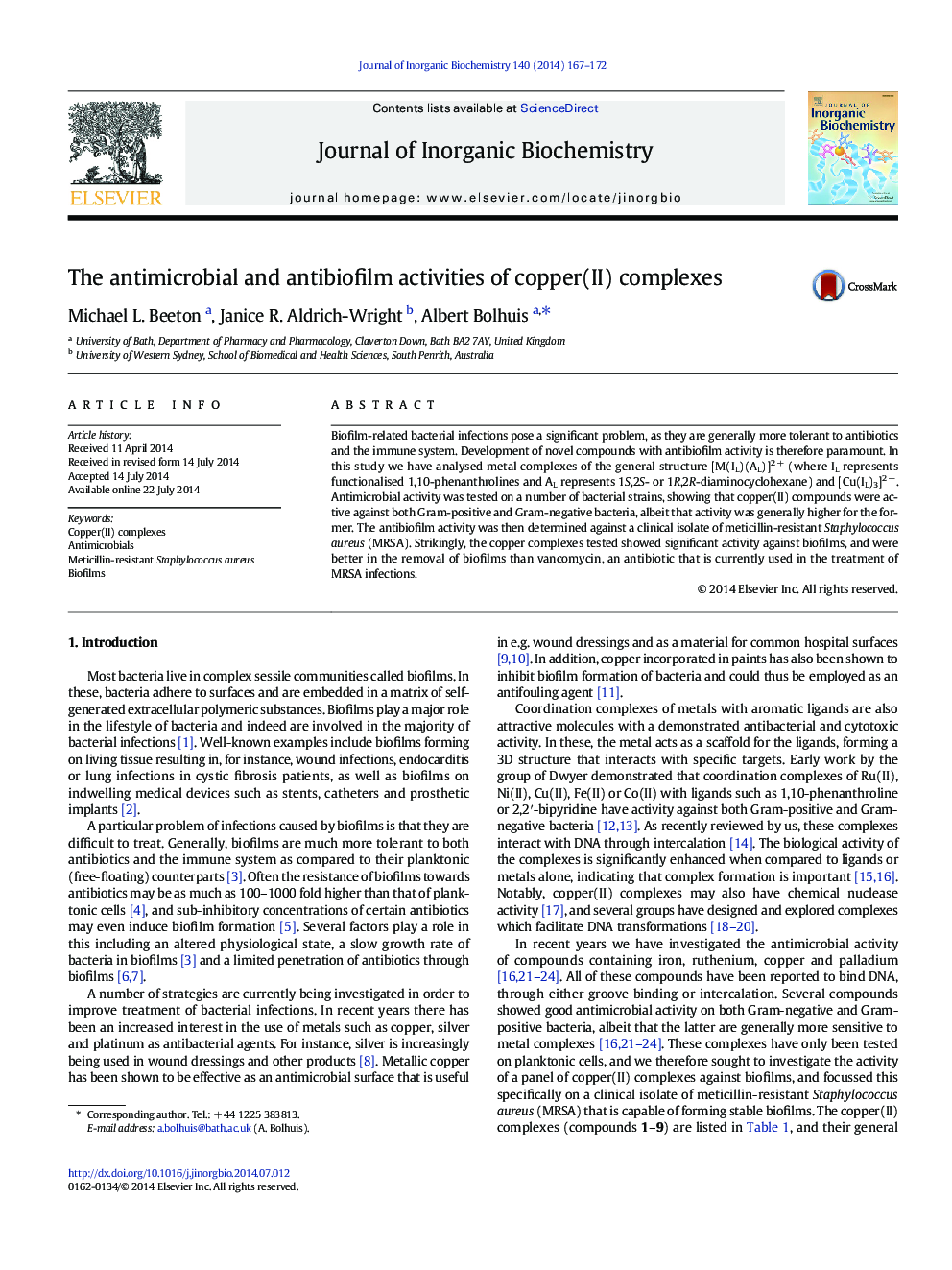| Article ID | Journal | Published Year | Pages | File Type |
|---|---|---|---|---|
| 1317310 | Journal of Inorganic Biochemistry | 2014 | 6 Pages |
Biofilm-related bacterial infections pose a significant problem, as they are generally more tolerant to antibiotics and the immune system. Development of novel compounds with antibiofilm activity is therefore paramount. In this study we have analysed metal complexes of the general structure [M(IL)(AL)]2 + (where IL represents functionalised 1,10-phenanthrolines and AL represents 1S,2S- or 1R,2R-diaminocyclohexane) and [Cu(IL)3]2 +. Antimicrobial activity was tested on a number of bacterial strains, showing that copper(II) compounds were active against both Gram-positive and Gram-negative bacteria, albeit that activity was generally higher for the former. The antibiofilm activity was then determined against a clinical isolate of meticillin-resistant Staphylococcus aureus (MRSA). Strikingly, the copper complexes tested showed significant activity against biofilms, and were better in the removal of biofilms than vancomycin, an antibiotic that is currently used in the treatment of MRSA infections.
Graphical abstractThe compound [Cu(56Me2phen)(SS-dach]Cl2 demonstrates effective biofilm killing and removal capabilities against 24 h MRSA biofilms. Left panel shows an untreated biofilm and right panel shows a biofilm treated with the Cu(II) compound (live cells stain green; dead cells stain red).Figure optionsDownload full-size imageDownload as PowerPoint slide
